History of Arbanasi
Arbanasi was founded in the late 15th centry by Christians coming from the south-western parts of the Balkan peninsula - Bulgarians, Greeks, Albanians. It was ruled for number of decades by different Ottoman notables. By the mid 16 th century it became property of Roustem pasha, the Grand Vizir to the Sultan of the Ottoman Empire. The population was granted many privileges and paid reduced taxes, providing the safety of the pass nearby in return. These favourable conditions brought the settlement to a considerable prosperity and attracted new settlers.
The wealthy Arbanassi merchants were actively involved in international trade and had established close links with Italy, Austro-Hungary, Russia, Wallahia and Italia. They carried out significant transactions between European towns and Istanbul. A good number of crafts flourished in the village-goldsmiths, coppersmiths, blacksmiths and silk-worm breeding.
The diverse character of the population, its economic might and the intensive contacts with many countries were the main condition for the creation of an original culture. Unique are the architectural and religions monuments that have come down to us from the 17th and 18th centuries - houses, streets, fountains churches, and monasteries, mural painting, iconostases and icons.
The prosperity of Arbanasi lasted until the end of the 18th century when it was plundered and devastated by bands of Turks.
Today the village has its new life as an architectural and artistic preserve. Its unique nature cultural and historic heritage, immediate proximity to Veliko Turnovo, make the village an attractive place for visits. The old atmosphere is eleganty combined with modern tourist services.
We took the short bus ride from Veliko Tarnovo to the village of Arbanassi. There we had a great Bulgarian lunch before venturing out to see some of the sights.
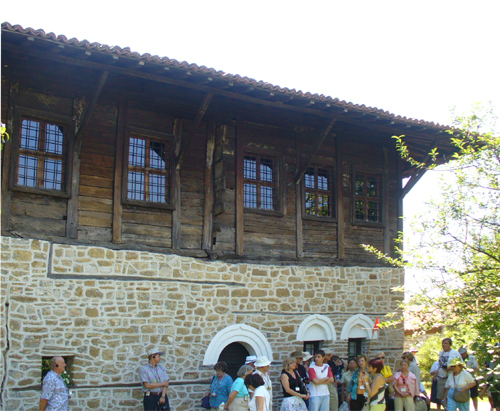 Our first stop was the Kostantsaliev House, built in the 17th century. Like other dwellings erected after the conflagration that gutted Arbanasi in 1798, the ground floor (with servants' quarters and store-rooms) is built of stone and entered via a nail-studded gate, while the upper floor is made of wood.
Our first stop was the Kostantsaliev House, built in the 17th century. Like other dwellings erected after the conflagration that gutted Arbanasi in 1798, the ground floor (with servants' quarters and store-rooms) is built of stone and entered via a nail-studded gate, while the upper floor is made of wood.
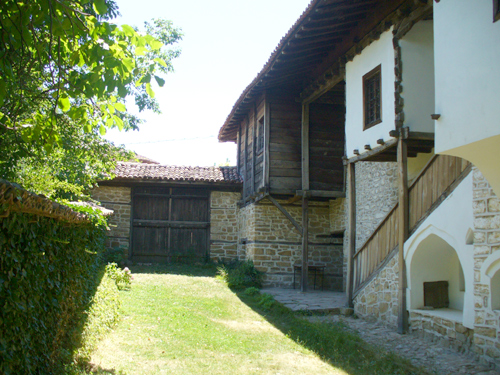
 This side has the wooden staircase that ascends to the reception hall, from which one door leads to the "winter room" or communal bedroom.
This side has the wooden staircase that ascends to the reception hall, from which one door leads to the "winter room" or communal bedroom.
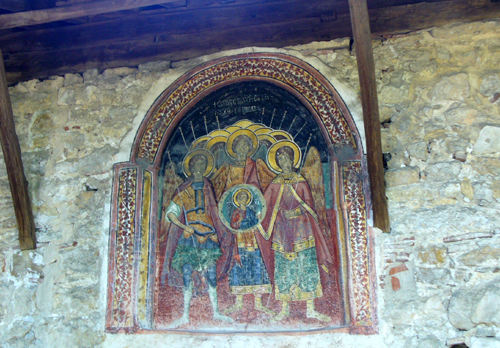 Our next visit was to the Church of the Archangels Michael and Gabriel. The pair are here depicted in a mural above the western portal. Dating from 1600, the church is a solid brick structure adorned with irregular lines of blind arcading, its gloomy interior illuminated by tiny, iron-grilled windows.
Our next visit was to the Church of the Archangels Michael and Gabriel. The pair are here depicted in a mural above the western portal. Dating from 1600, the church is a solid brick structure adorned with irregular lines of blind arcading, its gloomy interior illuminated by tiny, iron-grilled windows.
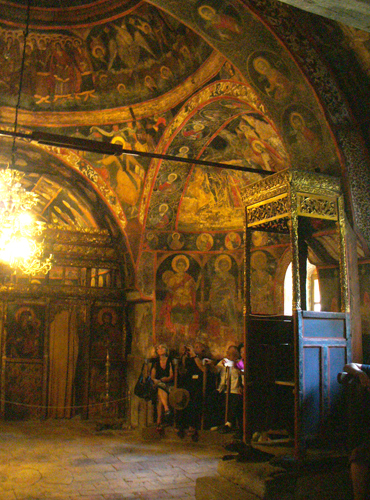 Besides the beauty of the interior, we were also privileged to hear a quartet sing a number of Gregorian chants, as we sat around the edge of the church.
Besides the beauty of the interior, we were also privileged to hear a quartet sing a number of Gregorian chants, as we sat around the edge of the church.
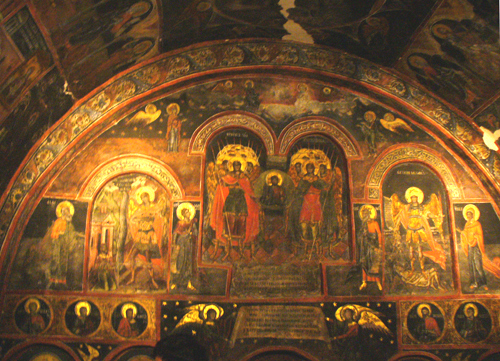 A local schoolmaster, Hristo, was called on in the early eighteenth century to execute most of the frescos, but some were painted jointly by itinerant masters Georgi of Bucharest and Mihail of Salonika.
A local schoolmaster, Hristo, was called on in the early eighteenth century to execute most of the frescos, but some were painted jointly by itinerant masters Georgi of Bucharest and Mihail of Salonika.
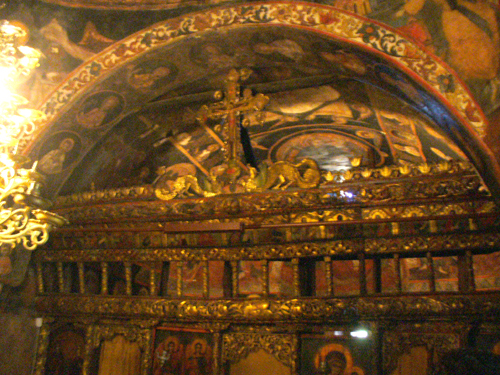 The iconstasis at the front of the church.
The iconstasis at the front of the church.
 An icon of Christ with God the Father below.
An icon of Christ with God the Father below.
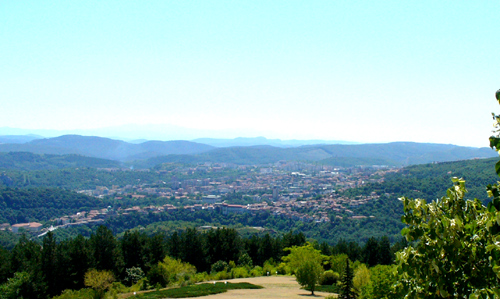 From a building which had been the home of a former Communist ruler, and is now a hotel, we had a great view of Veliko Tarnovo which we had visited earlier.
From a building which had been the home of a former Communist ruler, and is now a hotel, we had a great view of Veliko Tarnovo which we had visited earlier.
After a delighful day here, we rode the bus to meet our ship, which will continue sailing on the Danube through the Iron Gate.
